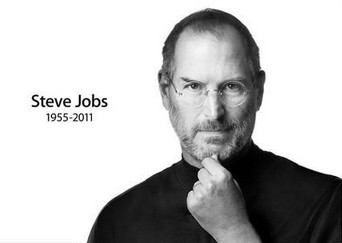Jobs was often bullied, and in the middle of seventh grade he gave his parents an ultimatum. “I insisted they put me in a different school,” he recalled. Financially this was a tough demand. His parents were barely making ends meet, but by this point there was little doubt that they would eventually bend to his will. “When they resisted, I told them I would just quit going to school if I had to go back to Crittenden. So they researched where the best schools were and scraped together every dime and bought a house for $21,000 in a nicer district.”
喬布斯經常被欺負,到七年級上到一半的時候,他給父母下達了最后通牒。“我堅持要他們送我去別的學校。”他回憶說。這在經濟上對他的父母來說是個艱難的挑戰。當時他們家勉強能夠收支平衡。但那樣的時刻,毫無疑問,父母最終一定會滿足他的意愿。“他們一開始反對,我就告訴他們,如果要我回到克里滕登的話,我就再也不上學了。所以他們就調查了一下最好的學校在哪里,然后傾盡所有,在一個更好的地區,花21000美元買下了一座房子。”
The move was only three miles to the south, to a former apricot orchard in Los Altos that had been turned into a subdivision of cookie-cutter tract homes. Their house, at 2066 Crist Drive, was one story with three bedrooms and an all-important attached garage with a roll-down door facing the street. There Paul Jobs could tinker with cars and his son with electronics.
這趟搬家僅僅是向南移了3英里,來到了南洛斯阿爾托斯(SouthLosAltos)一處由杏樹果園改造成的毫無特色的居民區。他們的新家位于克萊斯特路2066號,是一棟平房,有三間臥室,以及一個面朝馬路、帶卷簾門、設施齊全的車庫。在車庫里,保羅·喬布斯可以修汽車,而他兒子可以玩他的電子設備。
Its other significant attribute was that it was just over the line inside what was then the Cupertino-Sunnyvale School District, one of the safest and best in the valley. “When I moved here, these corners were still orchards,” Jobs pointed out as we walked in front of his old house. “The guy who lived right there taught me how to be a good organic gardener and to compost. He grew everything to perfection. I never had better food in my life. That’s when I began to appreciate organic fruits and vegetables.”
這棟房子的另一個意義重大之處就是它正好處在庫比蒂諾-森尼韋爾學區內,這是硅谷最安全也是最好的學區之一。“我搬來這兒時,這些角落里都還是杏樹,”我們走過他家的老屋前,喬布斯指給我看。“住在那里的那個家伙教我怎么做一名有機作物園丁,以及如何制作堆肥。他不管種植什么東西都要追求完美。我一生中再沒吃過比那兒更好的食物了。也就是從那時候起,我喜歡上了有機水果和蔬菜。”
Even though they were not fervent about their faith, Jobs’s parents wanted him to have a religious upbringing, so they took him to the Lutheran church most Sundays. That came to an end when he was thirteen. In July 1968 Life magazine published a shocking cover showing a pair of starving children in Biafra. Jobs took it to Sunday school and confronted the church’s pastor. “If I raise my finger, will God know which one I’m going to raise even before I do it?”
盡管喬布斯的父母對于宗教信仰并不是十分狂熱,但他們還是希望自己的孩子能受一點兒宗教教育,所以大多數的星期天他們都會帶他去路德教堂(theLutheranChurch)。這一活動在他13歲那年鐘束了。喬布斯一家訂閱了《生活》雜志,1968年該雜志在封面上刊登了一張令人震驚的照片,照片上是比亞法拉的一對饑餓的兒童。喬布斯把雜志帶到教堂,質問牧師:“如果我舉起我的手指頭,上帝在我舉之前就知道我要舉哪一根嗎?”
The pastor answered, “Yes, God knows everything.”
牧師回答說:“是的,上帝無所不知。”
Jobs then pulled out the Life cover and asked, “Well, does God know about this and what’s going to happen to those children?”
喬布斯于是拿出那期《生活》雜志的封面,問道:“那么,上帝知道這些嗎?他知道這些孩子身上會發生什么事情嗎?”
“Steve, I know you don’t understand, but yes, God knows about that.”
“史蒂夫,我知道你不明白,但是,是的,上帝知道這一切。”
Jobs announced that he didn’t want to have anything to do with worshipping such a God, and he never went back to church. He did, however, spend years studying and trying to practice the tenets of Zen Buddhism. Reflecting years later on his spiritual feelings, he said that religion was at its best when it emphasized spiritual experiences rather than received dogma. “The juice goes out of Christianity when it becomes too based on faith rather than on living like Jesus or seeing the world as Jesus saw it,” he told me. “I think different religions are different doors to the same house. Sometimes I think the house exists, and sometimes I don’t. It’s the great mystery.”
喬布斯宣布,他再也不想崇敬這樣一位上帝,他也再沒有去過教堂。不過,他倒是花了好幾年時間研究并嘗試實踐佛教禪宗的教義。幾年后,他反思自己的精神感受時說,宗教應該更多地強調精神體驗,而不是一味遵守教條。“當基督教太過基于信仰,而忽略了以耶穌的方式生活或者從耶穌的角度看世界時,它的精髓就消失了,”他告訴我,“我覺得不同的宗教就好比通往同一棟房子的不同的門。有時候我覺得這棟房子存在,有時候我又覺得它不存在。這是最神秘的。”
Paul Jobs was then working at Spectra-Physics, a company in nearby Santa Clara that made lasers for electronics and medical products. As a machinist, he crafted the prototypes of products that the engineers were devising. His son was fascinated by the need for perfection. “Lasers require precision alignment,” Jobs said. “The really sophisticated ones, for airborne applications or medical, had very precise features. They would tell my dad something like, ‘This is what we want, and we want it out of one piece of metal so that the coefficients of expansion are all the same.’ And he had to figure out how to do it.” Most pieces had to be made from scratch, which meant that Paul had to create custom tools and dies. His son was impressed, but he rarely went to the machine shop. “It would have been fun if he had gotten to teach me how to use a mill and lathe. But unfortunately I never went, because I was more interested in electronics.”
喬布斯的父親當時在光譜物理公司(Spectra-Kiysics)工作,該公司坐落在旁邊的圣克拉拉,為電子設備和醫療產品生產激光器件。作為一名機械師,他為工程師們設計的產品制作樣機。他的兒子被那種對完美的追求所深深吸引。“激光儀器要求極其精準的調校,”喬布斯說,“真正尖端的激光儀器,比如飛機上使用的或者用于醫療的,都非常精密。工程師們會對我爸爸說,‘這就是我們想要的,我們還想要用一整塊金屬板一體成型來保證膨脹系數的一致’然后爸爸就要想辦法怎么實現。”大多數樣機都是從零開始制作的,這就意味著保羅·喬布斯必須定制各種工具和模他的兒子被此深深吸引,卻很少去車間看看。“要是他能教我用銑和車床的話,一定會很有意思的,但遺憾的是,我從沒去過他的車間,因為我對電子的東西更感興趣。”
One summer Paul took Steve to Wisconsin to visit the family’s dairy farm. Rural life did not appeal to Steve, but one image stuck with him. He saw a calf being born, and he was amazed when the tiny animal struggled up within minutes and began to walk. “It was not something she had learned, but it was instead hardwired into her,” he recalled. “A human baby couldn’t do that. I found it remarkable, even though no one else did.” He put it in hardware-software terms: “It was as if something in the animal’s body and in its brain had been engineered to work together instantly rather than being learned.”
一年夏天,保羅·喬布斯帶著史蒂夫去威斯康星州參觀他們家的奶牛場。鄉村生活對史蒂夫毫無吸引力,但有一幅畫面卻深深刻在了他心上。他看到了一只小牛犢的出生,讓他驚訝的是,這只小動物才落地幾分鐘就掙扎著站起來開始走路。“這不是它通過學習獲得的技能,而是與生俱來的,”他回憶說,“人類的嬰兒就沒有這種能力。我覺得這很了不起,雖然別人都不這么想。”他用軟硬件的術語來形容這個現象:“就好像是設計好的一樣,動物身體里的某些東西和它大腦里的某些東西在它出生后立刻始協同作用,而不需要它去學習。”
In ninth grade Jobs went to Homestead High, which had a sprawling campus of two-story cinderblock buildings painted pink that served two thousand students. “It was designed by a famous prison architect,” Jobs recalled. “They wanted to make it indestructible.” He had developed a love of walking, and he walked the fifteen blocks to school by himself each day.
到了九年級,喬布斯去了家園髙中(HomesteadHigh),這所學校的校園有些雜亂,由幾棟兩層樓的磚砌建筑構成,建筑都被刷成了粉色,當時有2000名學生。“學校是由一個著名的監獄建筑師設計的,”喬布斯回憶說,“他們想把學校建得堅不可摧。”喬布斯那時候愛上了走路,他每天都獨自走過15條街去上學。











